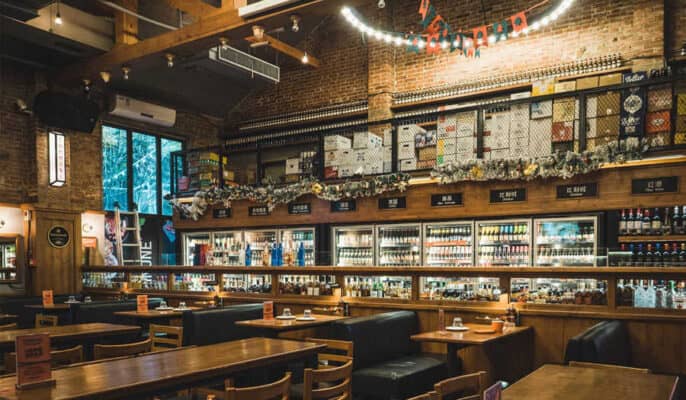Lager is not a one-size-fits-all beer. It is diverse and its history is tied to the history of brewing technology. Every breakthrough in equipment and technology and every improvement in the main ingredients of beer has led to the rise of a new beer style or brewery. Lagers differ from ales recipe recipes, brewery processes, and most , temperature-controlled fermentation and lagering. Beers are less forgiving than lagers because they are creamy, clean, and balanced. Fruity esters, hot spirits, and the large amounts of bitter components found in ales are generally avoided in light beers.
Lager beer brewing process
- To make a sourdough starter, maintain the sourdough starter temperature between 60°F and 75°
- Keep yeast in the 60°F – 65°F range. When fermentation begins, lower to the recommended temperature for the yeast you are using, which may be as low as 45°
- Fermentation takes 2 weeks. After fermentation, you want to increase the temperature as close to 62°F as possible. This is called diacetyl rest. An increase in temperature will do some goals. First, it will ensure fermentation is complete. Next, it will drive away any remaining carbon dioxide that may be causing the “off odor.” Finally, it will allow the yeast to absorb the diacetyl produced by fermentation.
- After two to three days at 62 degrees Fahrenheit (or close to it), you will want to pour the beer into carboys. Now it’s time for a beer. lower your body temperature by about 5°F each day until it reaches 35° It can be colder, but keep an eye on the temperature.

The beer brewing process is the process of making the beer cleaner and clearer. Cold temperatures reduce any remaining yeast deposits, creating a great-looking beer.
What does lager actually do?
At its simplest, lagering is a chemical process that uses bottom-fed yeast, cold temperatures, and time to condition your home brew. The beer brewing process occurs after the beer is fermented and before it is bottled/consumed, and can last anywhere from four weeks to a few months, depending on your specific beer.
Lagering of beer removes unwanted off-flavor-causing compounds while also carbonating, clarifying and turning the beer into the most refreshing and clean beer possible.
At what pressure should beer be fermented?
One of the many benefits of a Fermentation tank is the ability to ferment under pressure, which reduces costs by reducing fermentation time, reducing the need for forced CO2 through natural carbonation, saving time on the entire brewing program. Cut undesirable esters produced by high fermentation temperatures and free up your brewing equipment early to start your next brew. Beer pressure is in the 18PSI range (between 15-20PSI), depending on your yeast packaging specifications.
What temperature should be the brewhouse temperature for brewing beer?
For the perfect light, crisp traditional beer, mash at a low temperature around 148°F (65°C). If you plan to do a two-step brewhouse, lower the brewhouse temperature to around 144°F (62°C) before placing another log on the fire and raising it to 156°F (69°C) for the brewhouse.
Top Tips for Brewing Lager Beer
Patience is the key
Understand that beer brewing is a long process, and having enough patience and perseverance is half the battle. Because beer yeast grows at lower temperatures than ale yeast, beer takes longer to ferment than ale.
Ttemperature control
Beer requires specific brewer’s yeast, and as a living organism, different types of yeast must different temperatures to survive and perform . Brewer’s yeast grows between 60° F (15°C) and as low as 38° F (3°C).
The right beer ingredients
Plan your recipes with precision, and remember to choose ingredients that provide a clean, light, refreshing beer’s classic taste.

Use specific brewer’s yeast
Using a specific type of brewer’s yeast to brew your desired home brew will enhance the quality of your beer.
Consider a sourdough starter
Since brewer’s yeast ferments at lower temperatures, the yeast reproduces more . There is a risk of fermentation spoilage due to microbial invasion. But, sourdough starter contains a higher number of yeast cells, thus balancing out the lower and slower fermentation properties of brewer’s yeast. For Moonlag, a starter culture is a great way to ensure the beer has enough yeast cells to ferment.
Using a wort cooler
Using a wort cooler will help transferring the wort to the fermenter at a low enough temperature and prevent premature fermentation and beer off-flavors due to high temperatures at which the wort is transferred to the fermenter. The risk of beer oxidation increases as it cools from its initial high temperature, so the goal is to lower the temperature of the wort as as possible.
Take diacetyl rest
All cold fermentations, such as beer fermentations, hinder the elimination of diacetyl due to the low fermentation temperature. Since the presence of excess diacetyl often produces off-flavors in beer, consider performing a diacetyl rest in the fermenter at the end of primary fermentation.
Final conclusion
Making good beer is a difficult challenge. It takes longer to brew and ferment and uses more brewery resources than ale. Any flaws in ingredients, process, or equipment will show up in the final product, but the typical drinker doesn’t want to pay a premium for these time-consuming beers.
Whether you’re brewing an ale or a lager, many of the tips explained here are very good ideas. You can incorporate these brewing suggestions into your brewing plan to ensure that the beer you produce at home has the same unique characteristics as commercial beer.




